Mandatory Inspection-002 Main Rotor Spindle Machining/Field Damage
MI-002 Main Rotor Spindle Machining/Field Accident Damage
In the course of the NTSB investigation of the fatal accident May 22, 2010 of Gauchat-Safari Helicopter N147MD, the NTSB Materials Laboratory identified distinct circumferential machining marks in the radius of the main rotor spindle. A fatigue fracture originated at the point of transition from the radius to the flat shoulder of the larger diameter, parallel to the machining marks.
While there are a number of facts which indicate that this fracture was part of a chain of events that culminated in this accident, the integrity of the spindle may have been compromised.
This is the first known fracture of this type. Quality controls in the manufacturing of these critical parts are strict, and it is unlikely that there are other spindles which exhibit this condition. Several years ago, a spindle which had been fractured in an earlier crash was re-installed without inspection, which resulted in a fatal accident. Investigation of this accident revealed clear evidence of a two-stage fatigue fracture.
The main rotor spindle of all SAFARI Helicopters sold by Canadian Home Rotors Inc. must be inspected in the area of the four radiuses using a device to allow examination in high magnification. All parts manufactured by a process of circumferential machining will exhibit slight and uniform circumferential marks and are not a matter of concern. Any spindle found to have distinct machining marks of irregular depth must be replaced.
In addition, any spindle which has been subjected to shock loads resulting from any accident of sufficient force to cause damage to other areas of the helicopter, re-engagement of the clutch while the rotor blades are still in motion, hard starts of the engine, over-torque of the castle nut, or repeated over speed of the main rotor head should be inspected.
This inspection should be by liquid penetrant in accordance with ASTM E-1417 Rev. “05” Type I Method B Sensitivity Level 4 (Ultra-High) with Form D Nonaqueous Developer. Inspection personnel should be certified NDI Level II per NAS 410. Acceptance criteria should be in accordance with MIL-STD-1097 Rev. “Original Notice – 4 Sept. 2002” Acceptance Grade A.
CHR International Inc. will work with SAFARI owners on a case-by-case basis to assure the safe operation of the helicopter. On that same basis, the factory will adjust the cost of any parts or repairs, depending on the age, provenance and condition of the helicopter.
While the SAFARI is classified as “experimental”, and the builder can qualify as the authorized mechanic for his aircraft, we strongly recommend that owners limit their maintenance activities to routine items. Assembly of the main rotor head, main transmission, and tail rotor assembly is an operation requiring considerable experience and skill and should not be undertaken by anyone not trained by the factory. All main components are provided fully assembled and ready to install for this reason. The segments of the main components are assembled in a specific, carefully designed process, with multiple checkpoints and close tolerances. We strongly suggest that you rely on the factory or a dealer for maintenance or repair of these critical systems.
Please contact CHR International Inc. at 1.850.482.4141 or by email at gm@safarihelicopter.com.
